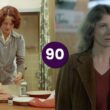Mylissa Fitzsimmons tells us how she made her beautiful, apocalyptic debut feature, Everything in the End, in Iceland with four crew members and only $30,000.
Everything in the End is screening virtually at Indy Film Fest between May 12th and 18th. Get tickets.
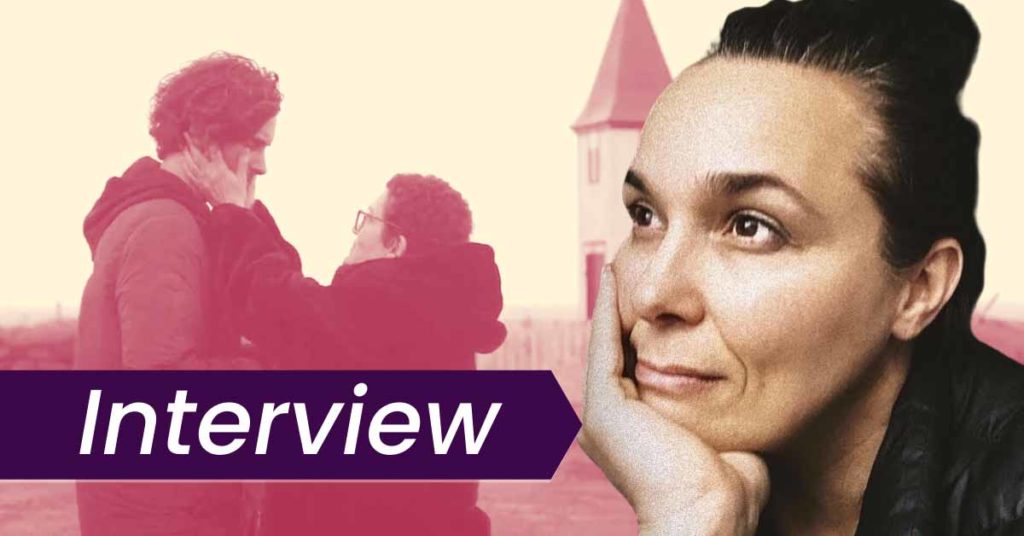
Discover one film you didn’t know you needed:
Not in the zeitgeist. Not pushed by streamers.
But still easy to find — and worth sitting with.
And a guide to help you do just that.
At Sundance in January, two films premiered that eerily predicted the pandemic, despite being shot before the pandemic: The Dog Who Wouldn’t be Quiet and The Pink Cloud. Now, joining their ranks is Mylissa Fitzsimmons’s contemplative feature debut, Everything in the End, although its echoes of the pandemic are more spiritual than literal. Fitzsimmons drops us in rural Iceland, by the sea, where a young Portugese man named Paulo (Hugo de Sousa) wanders alone through the gorgeous landscape. He’s on a trip that he and his mother were meant to take together, but after her passing, he’s come alone. Paulo, who is quiet and withdrawn, is often framed as a lone figure dwarfed by a majestic landscape. There’s an emotional and physical distance that exists between him and everyone around him. Sound familiar?
Fortunately, Everything in the End feels healing to watch during a pandemic, rather than depressing, because we watch Paulo do what we are all longing to do: make connections with other people. The film is structured around a series of conversations Paulo has with people he meets in the surrounding area, many of them strangers. Paulo and the strangers pour their hearts out to each other. They talk about life, death, regret, and what might have been. Slowly, as a viewer, we start to realise that something surreal is going on.
Despite its low-key, conversational nature, Everything in the End is actually a high-concept film about the end of the world. Paulo’s trip happens to coincide with an impending apocalypse. Yet Fitzsimmons isn’t too concerned about the details of how and why and when the world is going to end. We never see a news report or footage of panicked citizens in big cities. In the confined bubble of rural Iceland, the apocalypse is a hazy backdrop to Paulo’s personal grieving process, for his mother and for the world. The five strangers he meets each represent a different stage of the grieving process, each bringing him closer and closer to acceptance.
The story of how Fitzsimmons made her feature debut is hugely inspiring to me, as an aspiring filmmaker myself, because it disproves the myth that you must cross a certain budgetary threshold to make a feature that’s beautiful and moving. “I knew that it was time for me to make a feature,” Fitzsimmons told me; at the time of shooting, she had already made five short films between 2013 and 2018. Everything in the End is so stunning to look at that you’d never guess it was made with a crew of four and a budget of $30,000 USD. As Fitzsimmons points out, that’s not even considered a micro-budget, but “no budget”, and she was told that there was no point shooting the film until she could raise more. What she achieved seems somewhat miraculous, but she’s proved that it very much is possible.
I spoke with Fitzsimmons over Zoom, shortly after the virtual world premiere of Everything in the End at the Portland International Film Festival. When I spoke to her, she had just found out that the film won the Special Jury Award for Best Direction and Cinematography at the Ashland Independent Film Festival. It also won the Audience Award at the Sun Valley Film Festival. She spoke to me about making a film with so few resources, how the structure changed completely in the edit, and how the pandemic changed the way she saw her own film.
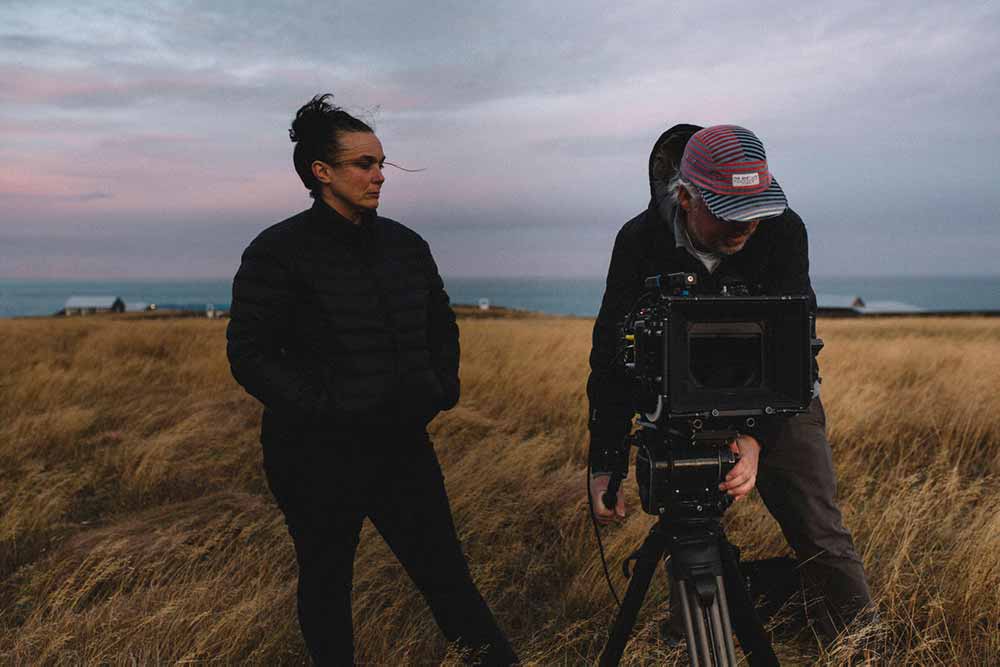
Seventh Row (7R): What was the genesis of Everything in the End?
Mylissa Fitzsimmons: The seed was planted for Everything in the End when I started traveling to Iceland. I knew that I wanted to make a film there; I just didn’t know what that film was going to be. I had an opportunity to take part in the Reykjavik Talent Lab in 2018, which I thought would be a really good way for me to figure out how film works within Iceland. I made sure to soak up the community and really immerse myself in Iceland.
Originally, a friend who I’d met at the lab, who’s actually in the movie, he and I were going to do a short film series together about what would you do on your last night on Earth? That didn’t happen, but I had written a short script about a man who is stranded in Iceland on the last night on Earth. It grew out from there.
I wanted to pick a place like Iceland for [a character who is] stranded because I had always thought, if I was going to be stranded anywhere, on the last day ever, I want to be somewhere where it’s really calm and really beautiful. Everyone’s really nice. There wouldn’t be panic. I felt that Iceland was that place. In Los Angeles [where Fitzsimmons lives], everything would probably be chaotic, like The Purge. The film isn’t an apocalyptic film. It’s not about the end of the world. It’s about grief and how we need each other to get through this process of grieving.
7R: You were working with such a small budget and a crew of four to make Everything in the End. How did you go from knowing you wanted to make this film in Iceland to actually doing it?
Mylissa Fitzsimmons: Brenden Hubbard, my producer, originally was like, “You can’t make this in Iceland. We don’t have money to do this. Where [else] would you film? Where’s an affordable place for us to film that’s beautiful?” We had bounced a few locations around here and there. Then, I said, “What’s the difference between doing it in the forest of Idaho versus doing it in Iceland?” Because we still have to fly people there.
At the time, WOW Air was still in service. When we budgeted out flight costs, it was like, “Wow, it’s actually cheaper for us to fly this economy budget airline into Iceland than it is to Idaho. So we’re saving money. Yay!” Then, WOW Air went out of business. By then, we had already committed to doing it in Iceland, and so we were like, “Okay, fuck it, let’s figure out where can we slash our already micro-budget to be even more micro-budget.”
That meant Brendan deferred his fee as a producer, and I wasn’t getting paid. It also meant we had to have a smaller crew. All four people that worked on the film I’d worked with before. They were friends who did it for a lower rate. I was really fortunate that everyone said, “Yes, I want to work with you. And I want to go to Iceland.”
If you ask people what a micro-budget is, they’re always like, “Oh, micro-budget is like $400,000 to almost a million.” I’m like, “Oh, wait, that’s a micro-budget? Because I made this movie for under $50,000. In eleven days. With four people. In Iceland.” People would say, “Oh, that’s considered a no budget.”
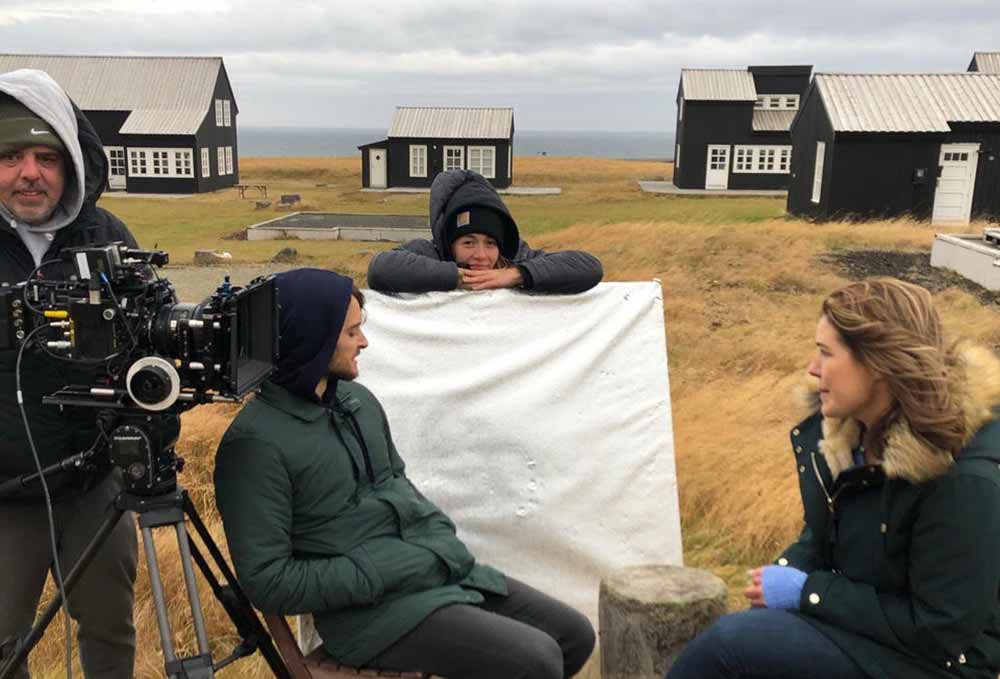
7R: I have to say, you wouldn’t know that Everything in the End was a no budget film from looking at it. It’s just so gorgeous. How do you make it look so high quality visually?
Mylissa Fitzsimmons: DP [Director of photography] Todd Hickey and I, we’ve known each other for over twenty years. We have a history together as documentary filmmakers and as friends. I think he’s a great DP.
We prepped a lot. I knew exactly what I wanted it to look like. My background is photography, so I’m a super visual person. I barraged him with a bunch of ideas and photos and films. I talked to him about what I wanted it to look like: the composition of framing, and what the landscape in Iceland is like. Nobody on the crew had been there except for me. I showed him a lot of photographs that I’d taken.
The movie starts out very lonely with our character isolated, but as we move forward, it becomes more and more intimate. [Working in] documentary films, he understands how you move the camera to express that intimacy when there’s not a lot of dialogue.
7R: What were some of your ideas about what you wanted the film to look like?
Mylissa Fitzsimmons: Making it look beautiful is not really hard, so I didn’t really worry about any of the landscape stuff. I like a shot where the composition is very specific, so I knew all my establishing shots were going to be these wides where my main character is never really [the focus] in frame.
The arc of the story is an emotional arc for Paulo, and so we had discussed how the movie starts and where the movie ends. It’s his grieving process. With each character, he moves into and out of their world. Paulo is learning as he goes through the process of grief. He starts out alone, and he’s always very off centre. He’s very much in his own world. The more people he meets and has these connections with, the more he’s able to become close to them and rely on them and need them. One of the themes of the film is that no one has to be alone when they’re grieving.
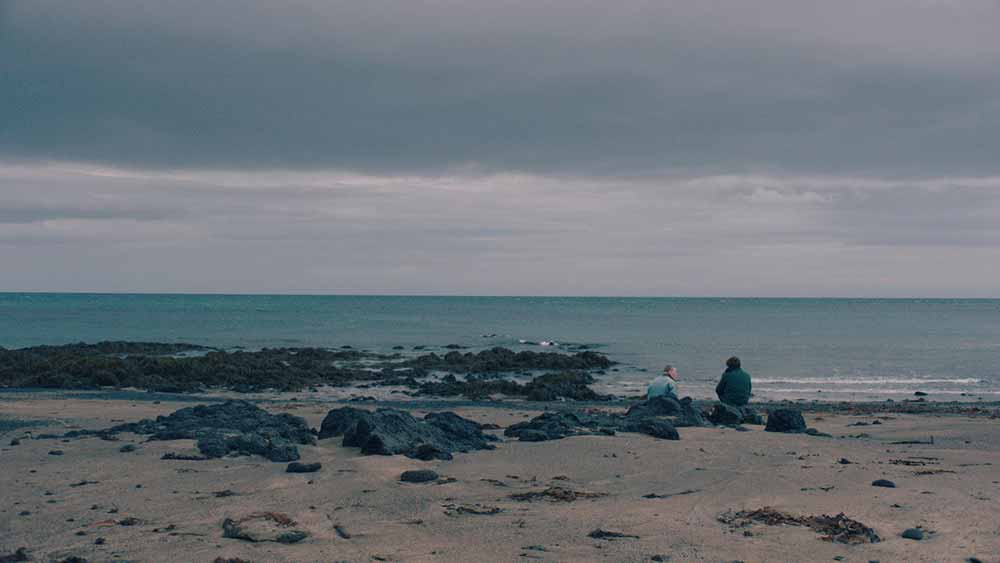
7R: There are a lot of actors in this film that only show up for one or two scenes. How did you work with actors?
Mylissa Fitzsimmons: I love working with actors. I find them fascinating. I couldn’t do what they do. I’m too insecure.
In the rehearsal and prep stages, I figure out how that actor likes to be directed. Sometimes it’s just a matter of asking them, “Do you want me to direct you? Or do you want me to just let you do your thing after we’ve done these rehearsals and character building together, and then I’ll step in when I feel like it’s not working?”
For this film, I knew that I was going to be working with a kid, and I knew I was going to be working with some non-actors. And [lead actor] Hugo [de Sousa], this is only his second film. So there was a learning curve. I was working with actors that come from theatre. That’s a whole different experience. I’ve never directed theatre actors, and it’s not the same, I learned.
Because of the tight schedule, and because of the lack of days, there wasn’t a lot of rehearsal time with the Icelandic actors. I had them come in the night before. I only had one day with each actor. They would drive in the night before, and we would sit and do a read through of the scene and talk a lot about what that scene meant and what needed to happen. I encouraged improv, but actually, there were only one-and-a-half scenes where there was some improv.
The biggest challenge was working with a kid [Reynir Ingvason]. He was only six. He didn’t speak English. It was a challenge, but it actually wasn’t [too much of] a challenge because he was so sweet and so lovely. I had worked with kids before, and I had been given some great advice: you can’t direct them. You just have to let the camera roll, and they’ll do what they’re going to do. It is exactly what happened. We would have to feed him the lines in English, and he would say them, we would quickly film that, and then we would just let him be a kid. My advice to Hugo was, “Don’t act with him; just be with him.”
7R: Can you tell me a bit more about what you learned about the difference between directing theatre actors versus non-theatre actors?
Mylissa Fitzsimmons: They ask different questions. When I [typically] work with people, they’re like, “What’s my motivation? Where do I move on this line? Where’s my mark?” [Whereas] I think that theatre actors carry themselves in different ways.
When I direct people, instead of saying, “You’re sad in this scene,” I’m one of those people who says, “What happens when this and this happens? That makes that character sad,” so that the actor can come to the conclusion themselves of how something makes them feel. I think theatre actors have this beautiful way of intrinsically already knowing that. And so their delivery of that sadness is different. It took me a while to figure out how to communicate with them about things that they are already feeling.
There’s also a way that they kind of project and act on film that is a little bit theatre. I would have to say, “Can you bring that down a little?” But then there’s this lovely [slightly heightened way of acting] that they have that made me feel like I was directing a Bergman film or something. I just had to let it go and let that happen and be like, “Oh, this is completely different from what I pictured in my mind, and it’s blowing me away in this beautiful, old, ’60s style film [way].”
7R: We often don’t see the beginnings or the ends of Paulo’s interactions with people. We’re just kind of thrown into them. How did that factor into the editing process?
Mylissa Fitzsimmons: My editor, Nicole McClure, I’ve worked with her on a few projects. I like editing. I really do enjoy it. But I also shoot to edit. I shoot so that there’s not a lot to work with. She knows that what she’s getting is what she’s getting.
In the original script, we had the end of the world [announced] at the beginning of the movie, and so every character that [Paulo] meets, we actually see his [first] meeting [with them]. When we went into the edit, we had this kind of A-B-C way of putting the film together. And then when I watched it, something kept feeling off for me. I knew that I had to change it. In the edit is where your movie is formed, anyway, and I knew that, as always, it was going to be a different movie from what I had written on the page.
One of the things that I thought about was, what if we start the movie, and it’s already the final days [of Earth]? I wanted [watching the film] to feel like when there’s a party going on and everyone’s drunk, and everyone’s telling stories, and then you arrive, and you’re only hearing snippets of stories. You go in and out of conversations, but you’ll never know the full story. I wanted the audience to be that sober person who only hears parts of stories and has to catch up, and then all of a sudden, the party’s over, and you’re like, “Oh, I know what everyone’s talking about now.”
For me, the way to do that in the film was to have Paulo’s character already know that the world is ending in a few days. We don’t see him meet [the other characters], because he’s already met them. I wanted the audience to hear everyone talking about death, but not quite understand, why is everyone talking about death? How does he know them? How long have they known each other? And then eventually, they catch up. Because again, I didn’t want the movie to really be about the end of the world, but about grief.
I didn’t want the audience to be Paulo. I wanted them to be catching up to Paulo. And so that’s how I took a film that was very linear, that I wasn’t enjoying, and said, “Instead of A-B-C, I’m gonna do J-K-P, and then hopefully people like it.”
One of the things that we discussed when it was in this more linear edit was that it was very clear what was day one, day two, and day three. It’s an easy way out to say the world’s ending in three days. But I really wanted time to be a construct. I didn’t want people to be like, “Oh, it’s morning on day two,” and, “Yeah, I’m on day three.” It didn’t matter to me what day it was. It didn’t matter to me what time of day it was. I didn’t want time to be there. Breaking up these scenes that way and starting mid-scene worked in my favour to do that, because I wanted everyone to be a little bit discombobulated about what day it was, where they were, and how many more days they had left.
7R: How long was that editing process?
Mylissa Fitzsimmons: We shot in October of 2019. And then [editor Nicole] and I immediately went on another project. We really started getting into it at the start of 2020, in January. She did a really rough assembly, and then she did these two cuts in the first two months that weren’t working. We did the big change in March when the pandemic hit. We started in March from scratch, basically.
We obviously had more time because everything shut down. But it was also a huge challenge for somebody like me, because I like to sit with the editor. I couldn’t do that. We edited the whole film over emails and text messages and FaceTime. It was a little frustrating for me. This is my first film, and everything felt really anti-climatic.
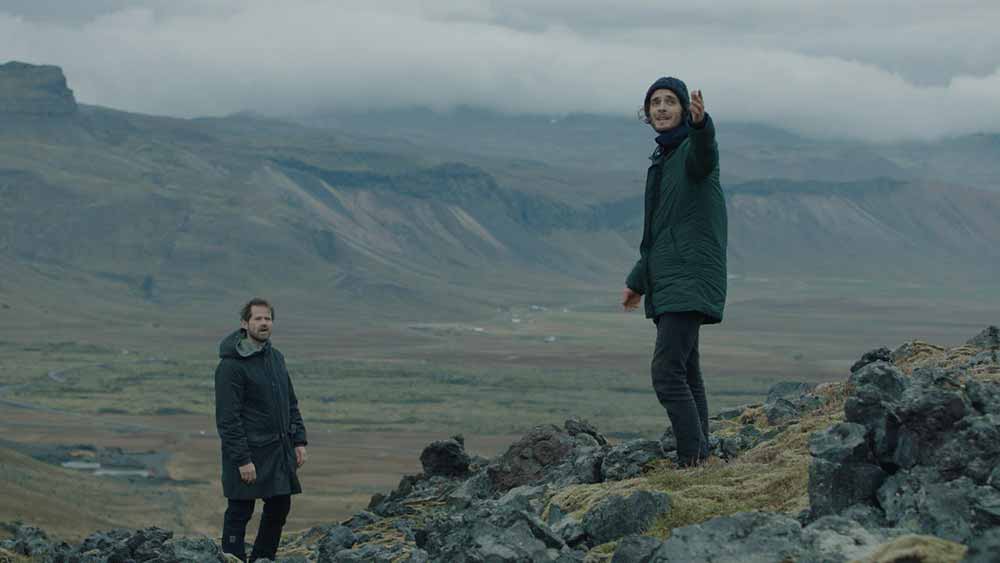
7R: Did living through the pandemic change your relationship to the material at all? Everything in the End strangely echoes the time we’re living in.
Mylissa Fitzsimmons: In about May or June, we started looking at the film differently. I would make these jokes and be like, “Oh, I really predicted how this was going to work. You just kind of wander aimlessly and anyone you see, you want to talk to them. That’s what my character does!” (laughs)
But around that three or four month mark, that craving for human interaction suddenly made the film, to me, a bit more about how we really need human connection: to touch people, to have them in our lives.
I haven’t really watched it in a while, and I wonder, now, how would I watch it? Because the feedback we’re getting is everyone’s perceiving it in a different way. I was like, “I want to make a really depressing movie that everyone gets upset about, and then everyone dies.” And now people are like, “No, you made a really beautiful movie about human connection, and it’s really hopeful.”
7R: I really love the sound in the film. What was your aim for the sound design in Everything in the End?
Mylissa Fitzsimmons: That’s Kirbie [Seis], she’s amazing. She loves sound. She has the most insane sound library.
She originally was going to fly out the day we were going to start shooting, but she ended up flying out early with us so that she could just go off on her own and record everything. I would often look over, and she’d be in a field far away just recording the sound of the wind or waterfalls.
I told her, I really want it to sound like Iceland. Everything sounds quiet, but it’s not quiet. The waves and the wind and the waterfall… you don’t really hear birds. You don’t hear traffic. You don’t hear people. I wanted to make a really quiet film. But not silent.
She had probably one of the harder jobs, because it was raining the whole time we were there, and there were gale force winds. All the tires have studs on them. We had a scene where we were filming out on the car, and it’s walking and talking, and poor Kirbie [had to record clean sound amidst] the wind and the rain and the studded tires. We almost had to cut [the scene]. But she worked really hard.
7R: If you could go back to day one and do it again, what would you do differently? What did you learn from making your first film?
Mylissa Fitzsimmons: The biggest thing that I learned is that I’m really glad that I did it. I knew that it was time for me to make a feature, but everyone said not not to do it until you have more money. I have seen so many people spend two, three, or four years trying to get the money. I’m a very impatient person. I knew that if I don’t just do this now with whatever I can scrounge up, it’s never going to get done.
What I learned was, it’s never about the film. It’s always about the process of making the film. In that process of making it, even with the challenges of no money and lack of days and lack of crew, it was such an exceptional experience. I knew that I made the right decision to do it and to do it now. Regardless of whether people like the film or not, or if they see the film or not, I’m just incredibly happy that I made it. It solidified my desire to keep making more and more movies and keep growing.
My biggest takeaway from it all is that I had an experience that wasn’t terrible. It wasn’t terrible for my first time. I’m going to do another one. That one might be horrible. This one wasn’t, and I feel very grateful.
7R: What are you working on next?
Mylissa Fitzsimmons: Because we’ve been in this pandemic for over a year, I’ve really been trying to become a better writer. Like I said, I’m a pretty impatient person, so almost all of my scripts are like, “Fifty pages, fine, fine, we’ll just figure it out on set.”
I’ve been focusing on writing, so when people like you ask me, “What are you doing next?”, I’m able to say, “I have all these scripts.” Even now, I have three totally different scripts that if someone were to say, “I want to do something with you,” I can say, “Pick one. Let’s do it.”
I have an environmental art house horror set in Antarctica. I have a lovely coming-of-age film, based on a true story, about a high school girl who takes her grandfather on a road trip to track down the author of all these love letters that he was sent. He has Alzheimer’s and he wants to remember this woman before he can’t remember her. I’m working on a story about a group of friends who lost touch and now they’re back in touch. And yesterday, I started a zombie movie. I love zombie films. I love horror movies. It’s like a stoner comedy zombie movie. I really just want to get back on set.
Everything in the End is screening virtually at Indy Film Fest between May 12th and 18th. Get tickets.
You could be missing out on opportunities to watch great films like Mylissa Fitzsimmons’s Everything in the End at virtual cinemas, VOD, and festivals.
Subscribe to the Seventh Row newsletter to stay in the know.
Subscribers to our newsletter get an email every Friday which details great new streaming options in Canada, the US, and the UK.
